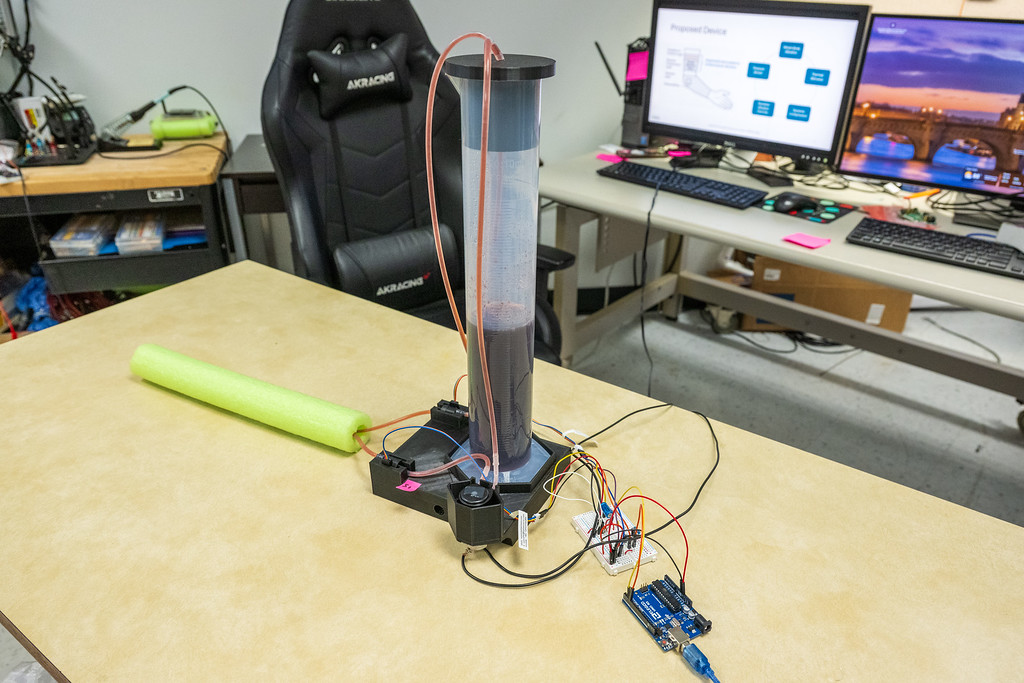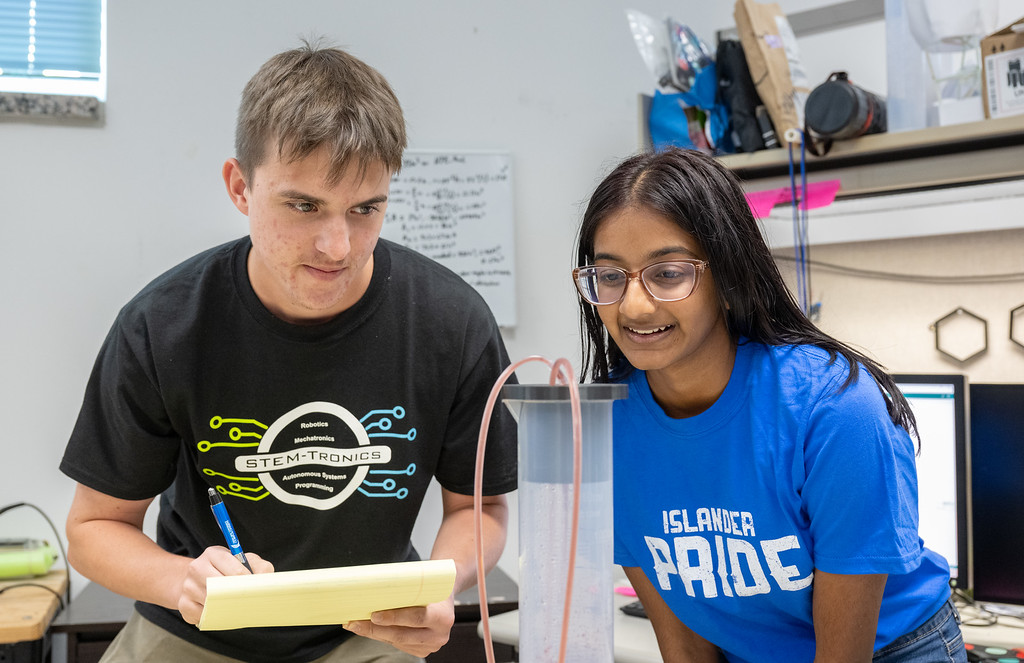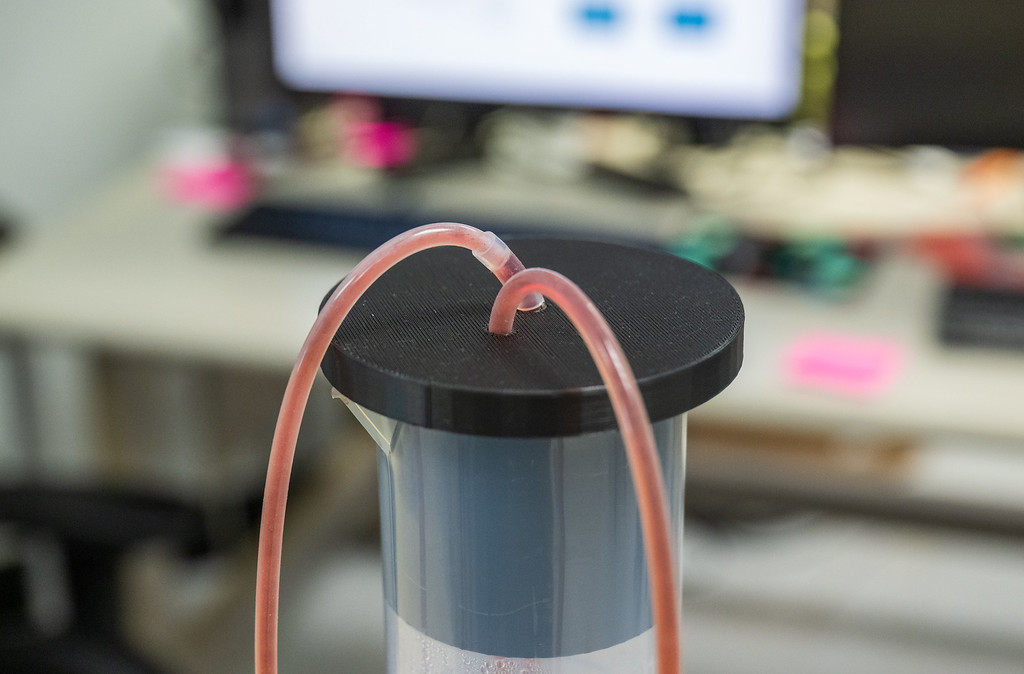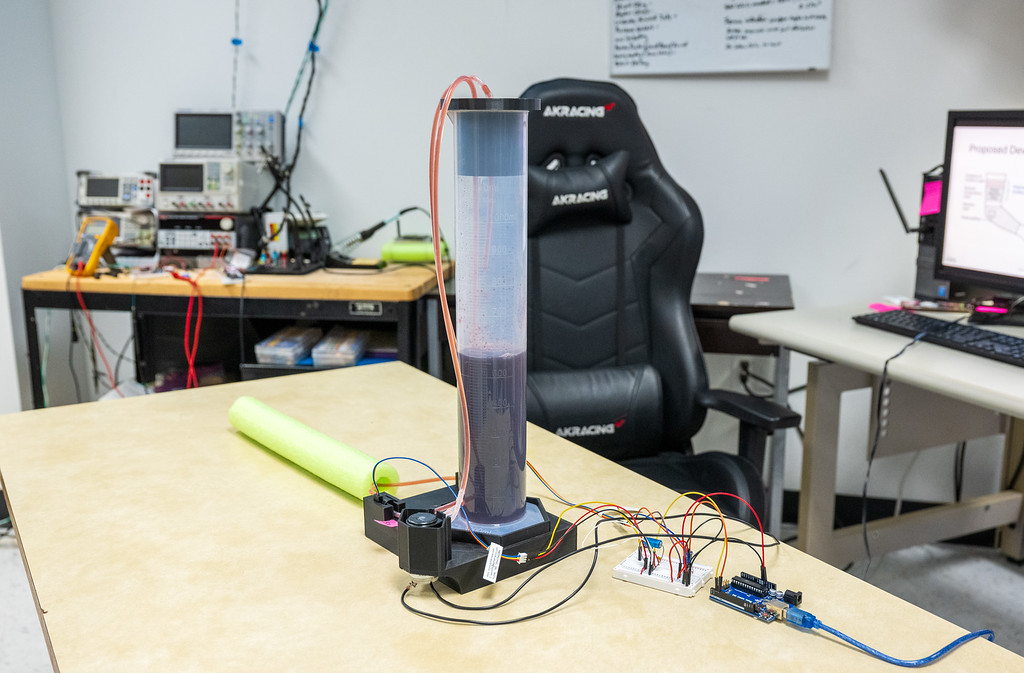藐视重力:TAMU-CC学生创新空间和地球压缩服装
CORPUS CHRISTI, Texas – Inspiration can strike when you least expect it. For Aleena Roy ’26, a biomedical science major at Texas A&M University-Corpus Christi, it came at a moment many of her peers know all too well.
“I was on Instagram doing my usual scroll, and I saw that NASA posted about a competition highlighting cardiovascular issues,” Roy said. “So, I thought about what I could do to help astronauts, but with real-world applications.”
接下来是一阵头脑风暴,产生了一个突破性的想法。 罗伊提出了一个概念,将振动和热能集成到一个压缩装置中,以帮助宇航员抵消太空旅行的物理影响。 同样的技术可以使地球上有血管疾病的人受益。 血管问题,血液在循环系统中的流动问题,可以从轻微到危及生命。
“While I was shadowing an interventional radiologist, I realized lots of patients had blood built up in their vessels,” Roy said. “It was mainly in the elderly, and the problem caused pain, numbness, and a heavy feeling in their legs and feet.”
对于宇航员来说,问题发生在相反的方向。 由于重力,血液会向上流动,有时会导致头部区域的剧痛,心脏功能减弱,以及与太空飞行相关的神经-眼综合征(SANS)或短期失明。 为了缓解这种疼痛,宇航员必须穿上笨重的压缩服,在一个地方呆上几个小时,直到他们的心血管系统好转。 罗伊决心要改变这一切。
“With my device, I am really hoping astronauts can maintain normal function in space,” Roy said. “Studies show vibration can help with pain mitigation. 在某种意义上,振动也有助于模拟重力,你可以利用它来帮助血液正确流动。 Heat also helps blood vessels regenerate and expand, allowing blood to flow back the correct way.”
To help make her dreams a reality, fellow student and mechanical engineering major Teran Hendricks ’25 signed onto the project. For Hendricks, this project brought two of his worlds together — his love for mechanical engineering and his career as an EMT. 他的第一项任务是帮助罗伊制造一种设备,可以模拟血液的运动,并显示压力对运动的影响。 在合作中,他们设计了一种管状装置,可以容纳类似血液的物质。 薄薄的塑料管连接到设备上,模仿静脉的功能。
“I used 3D printing to make most of the pieces,” Hendricks said. “We came up with the idea of using a pool noodle as our layer of skin. 我们把管子穿过面条。 Then, we used a circuit board to give us the energy to move the blood around and reenact how the circulatory system works.”
工程副教授Jose Baca博士帮助这个跨学科项目建立了桥梁,并在学生到达关键阶段时监督他们。 Thanks to funding from the university’s Office of Student 研究 and Innovation, Roy and Hendricks have been able to buy supplies to build their garment, including nylon to create the fabric conductive thread, a small speaker to provide sound vibrations, a heat sensor, and silicone.
“We’re starting with an arm sleeve made of silicone because it’s the easiest to replicate for this project,” Hendricks said. “It’s our proof of concept. Eventually, we want to develop full-body compression garments, especially for the legs.”
Roy said this project has opened her eyes to the different career paths in health care and has brought to life one of her favorite phrases, “Love to the point of invention.”
“I want to love my patients so deeply that I can create something to help them live a fuller, more functional life,” Roy said. “Knowing that something I designed could make a difference for so many people — that’s incredible. It’s bigger than me. It’s beautiful.”
Roy and Hendricks hope to complete the arm garment in time for this fall’s Texas Space Grant Consortium Design Challenge, where a first-place win would earn them the chance to work with a NASA mentor and present their project to a full team of NASA personnel.











